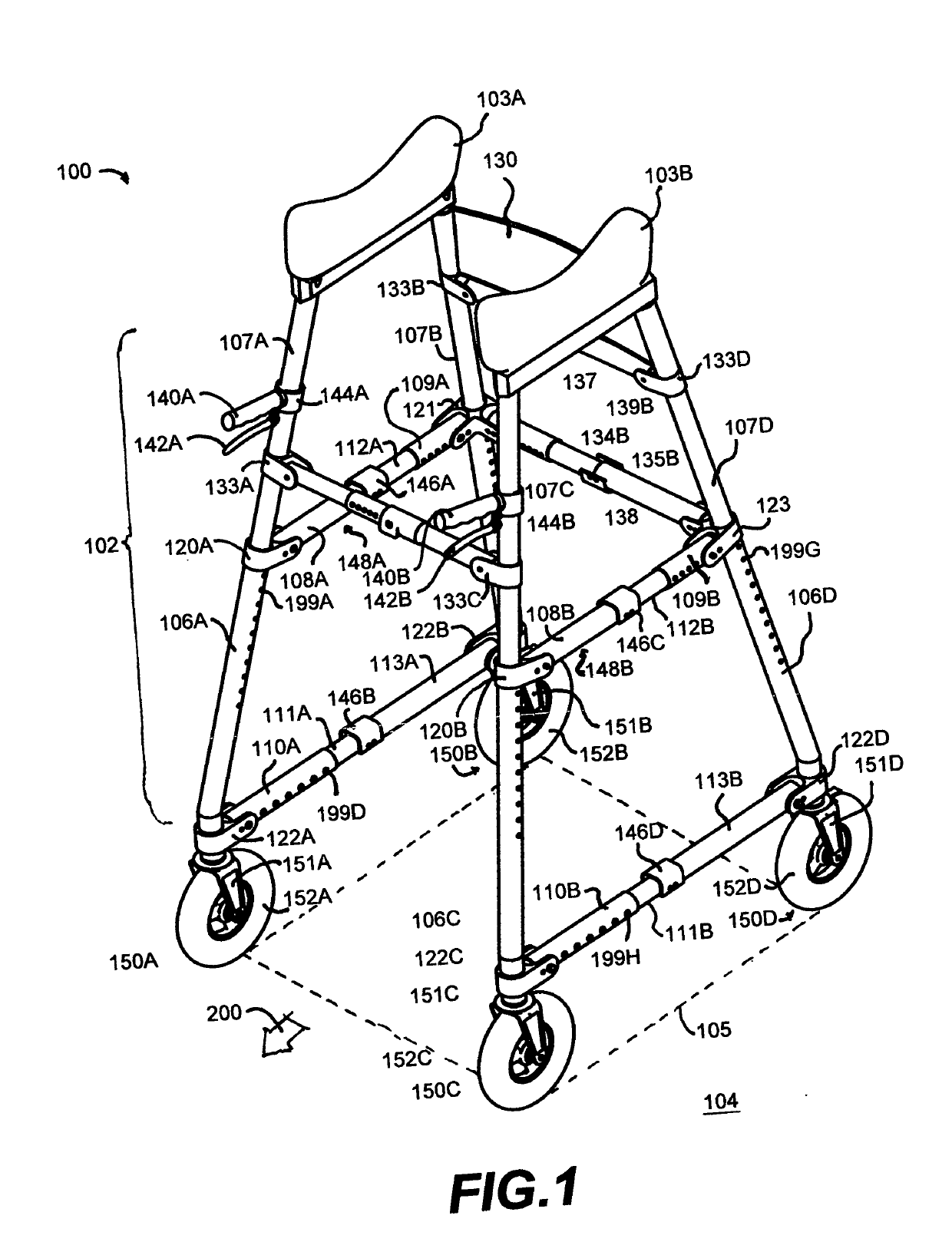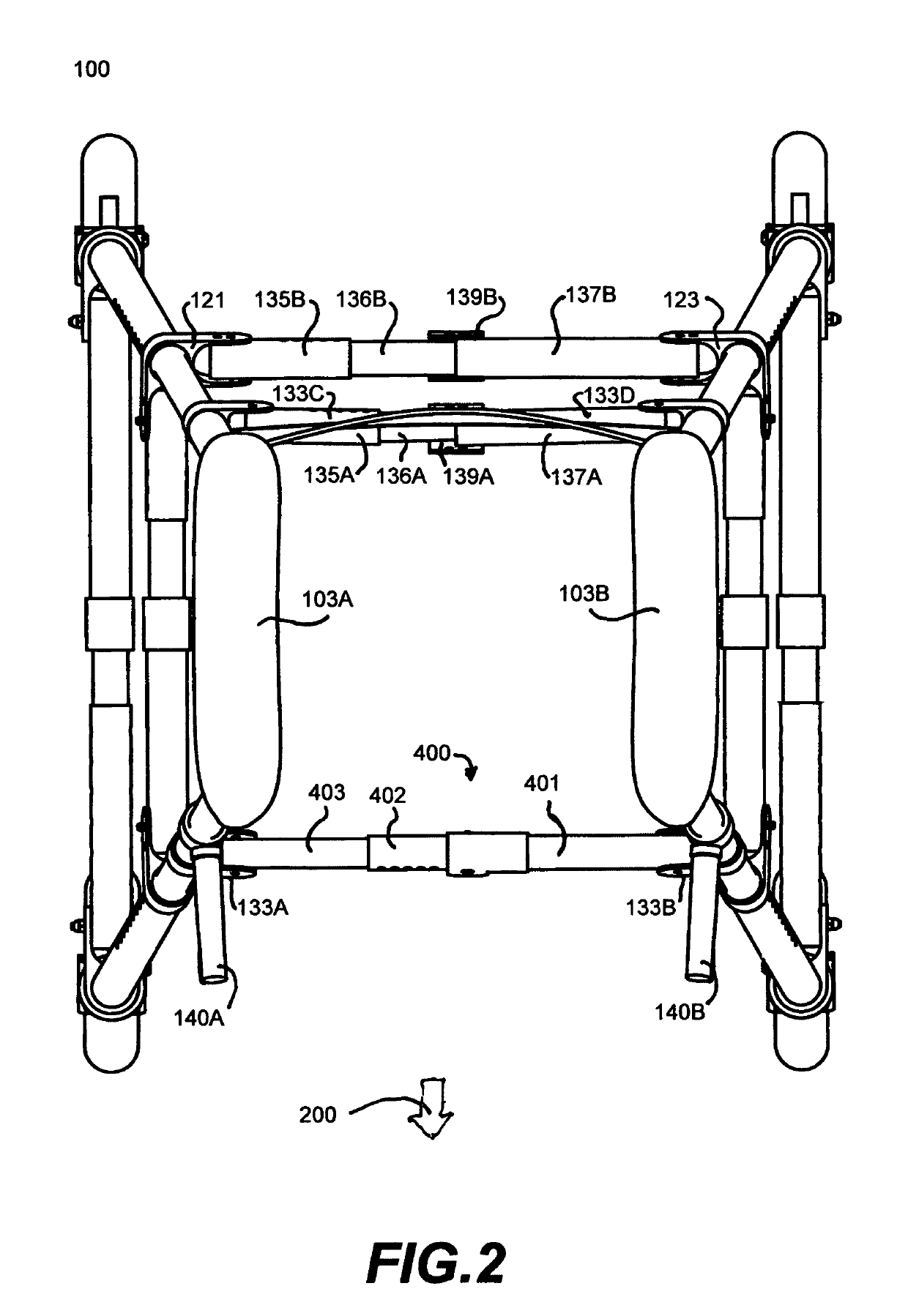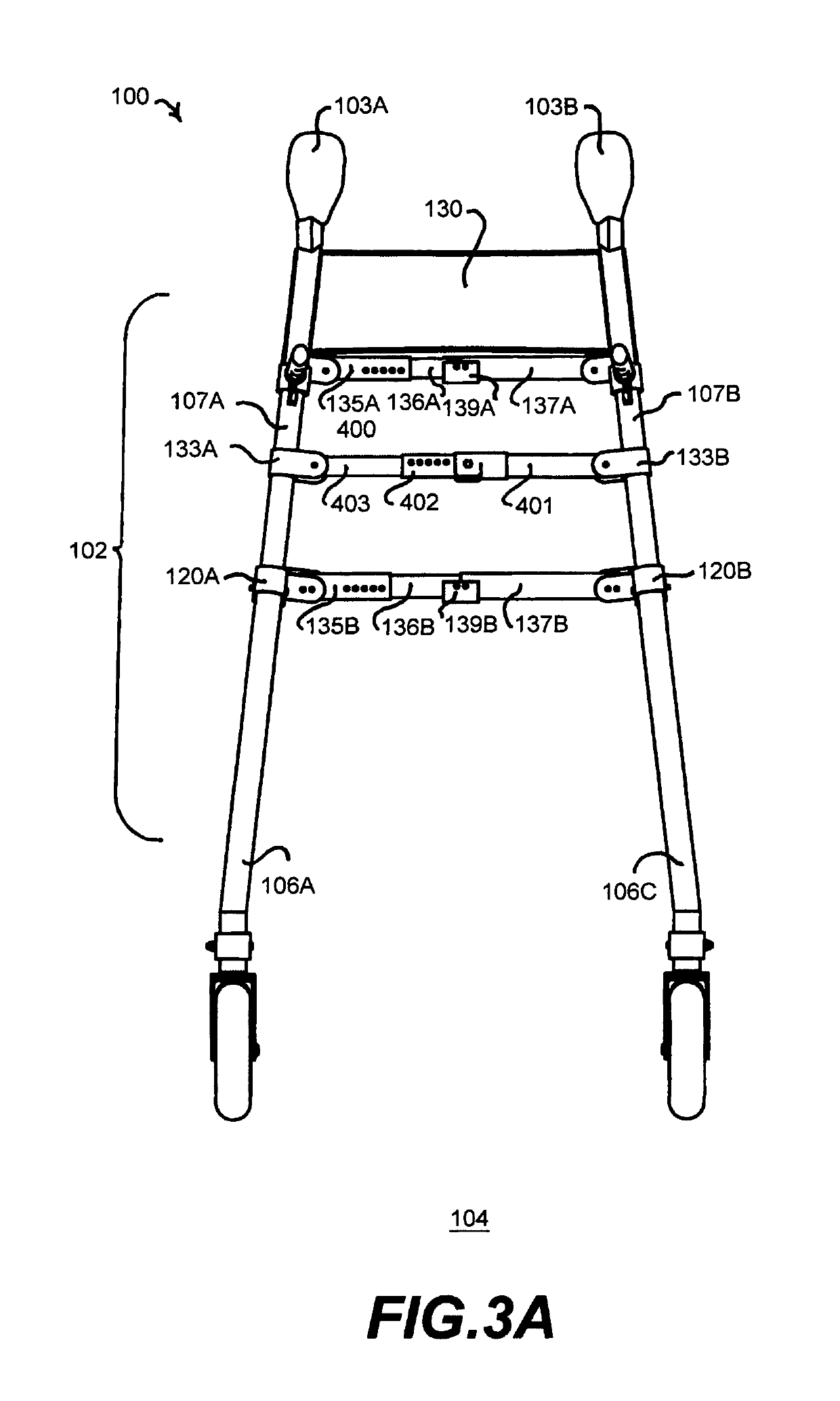Walk again walker
a walker and walking wheel technology, applied in walking aids, physical therapy, chiropractic devices, etc., can solve the problems of requiring significant hand arm strength to maneuver, requiring significant hand arm strength to operate any hand brake, and difficulty in smooth transition, etc., to achieve stability and control, and remain well balanced
- Summary
- Abstract
- Description
- Claims
- Application Information
AI Technical Summary
Benefits of technology
Problems solved by technology
Method used
Image
Examples
Embodiment Construction
[0037]FIG. 1 shows a foldable upright wheeled walker device, 100, with a main upright frame, 102, supported above a walkable surface, 104, on four caster wheel assemblies, 150A-D, inclusive of right wheel assemblies, 150A-B under the right-side frame portion and 150C-D under the left side frame portion of the walker. Frame 102 includes the right side trapezoidal frame assembly inclusive of two upper supports, 107A-B that slip-adjust within their respective lower receiver tubes, 106A-B, supported by the caster wheel assemblies, 150A-B and connected by an adjustable length foldable assembly at the bottom, 149A, in the middle by an adjustable length folding assembly, 148A, and at the top with armpit cushion assembly 103A; and the left side trapezoidal frame assembly inclusive of two upper supports, 107C-D that slip-adjust within their respective lower receiver tubes, 106C-D, supported by the caster wheel assemblies, 150C-D and connected by an adjustable length foldable assembly at the ...
PUM
 Login to View More
Login to View More Abstract
Description
Claims
Application Information
 Login to View More
Login to View More - R&D
- Intellectual Property
- Life Sciences
- Materials
- Tech Scout
- Unparalleled Data Quality
- Higher Quality Content
- 60% Fewer Hallucinations
Browse by: Latest US Patents, China's latest patents, Technical Efficacy Thesaurus, Application Domain, Technology Topic, Popular Technical Reports.
© 2025 PatSnap. All rights reserved.Legal|Privacy policy|Modern Slavery Act Transparency Statement|Sitemap|About US| Contact US: help@patsnap.com



